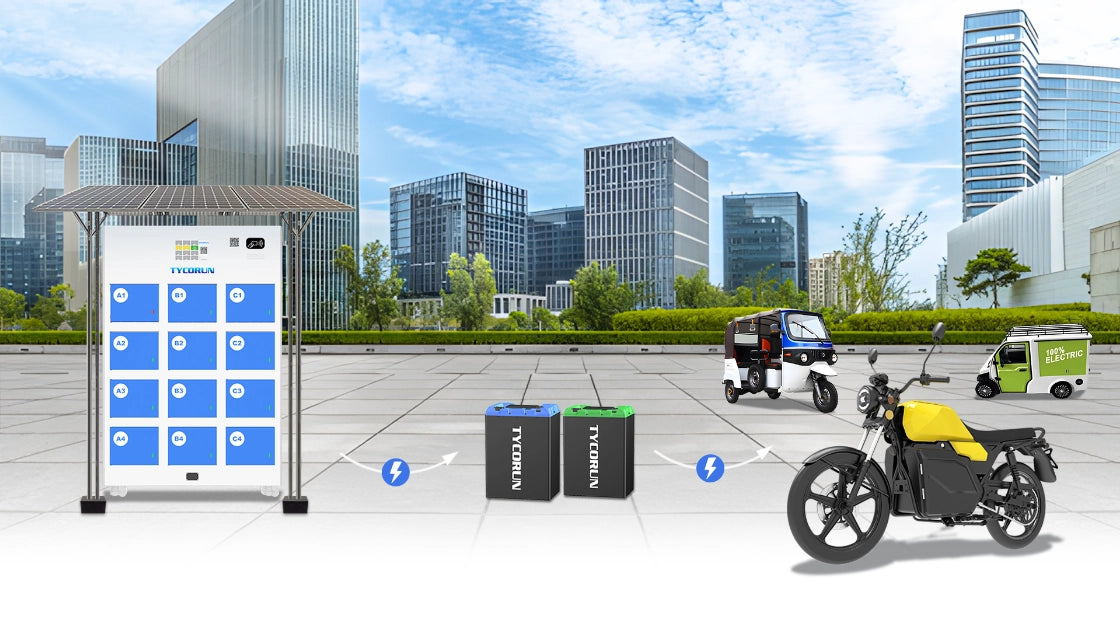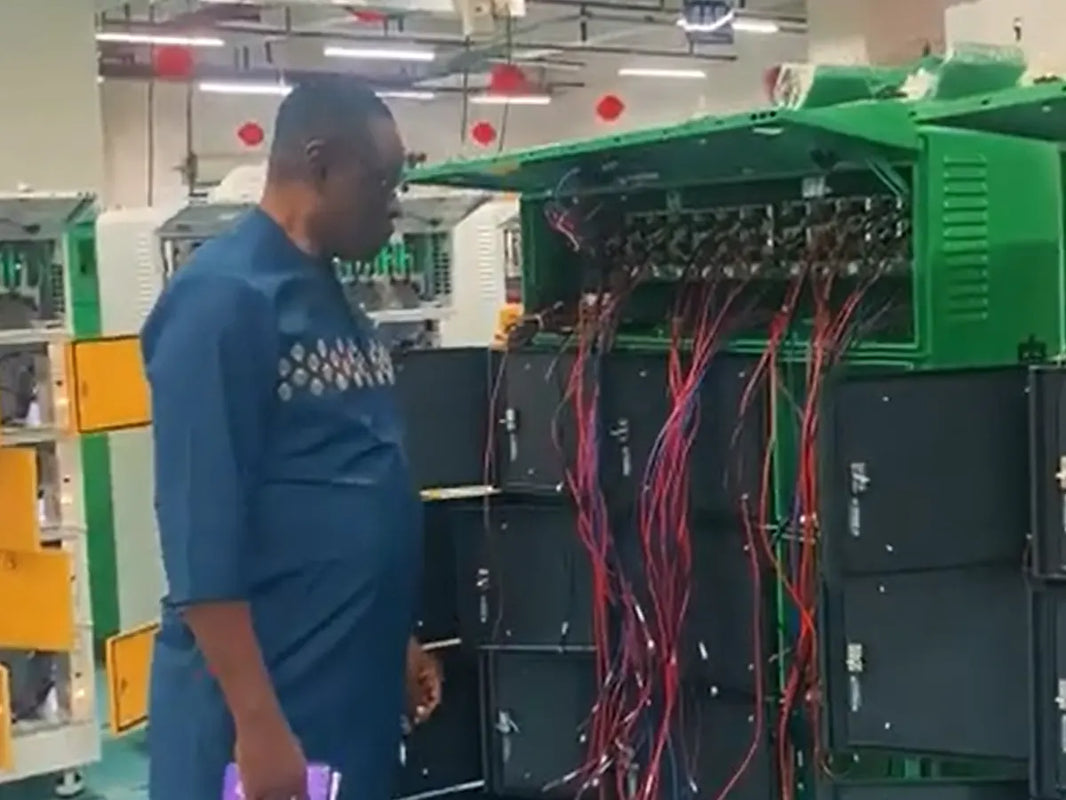Batteries naturally lose charge over time, even when idle. This article explains why batteries drain and provides guidance on storage, maintenance, and inspection. The passage explores chemical self-discharge, environmental factors, aging, and EV-specific drains. By understanding do batteries drain when not in use and implementing practical strategies, users can extend battery life, maintain performance, and prevent unexpected failures in electronics and vehicles.

Main content:
- Why Do Batteries “Drain Themselves”?
- Basic Battery Working Principle
- Do Batteries Drain When Idle?
- EV Idle Power Loss Sources: Why Do Batteries Drain When Not in Use
- Key Factors Affecting Battery Idle Drain: Do Batteries Drain When Not in Use
- How Long Can Batteries Sit Idle?
- How to Reduce Battery Idle Drain
- When to Recharge or Replace
- Symptoms of Rapid Battery Drain: Signs of Do Batteries Drain When Not in Use
- Conclusion
- FAQs
Why Do Batteries “Drain Themselves”?

Many people think batteries don’t lose charge when idle, but in reality, this is almost impossible. All types of batteries undergo slow yet continuous chemical changes, even during storage, causing gradual power loss. This natural depletion is called self-discharge, which explains the principle behind do batteries drain when not in use. Understanding self-discharge helps choose suitable battery types and optimize storage, avoiding the embarrassment of “suddenly dead” devices after long periods of inactivity.
Basic Battery Working Principle
To understand why batteries lose power when idle, you first need to know how they work. A battery consists of two electrodes and an electrolyte. Chemical reactions between these materials generate electricity for devices. The key point is—these reactions do not stop completely just because the battery isn’t used.
Even when fully disconnected and stored in a drawer, the battery’s internal chemicals still undergo tiny but continuous reactions, like a pot of soup just taken off the stove, still slowly cooling. Similarly, the battery gradually “consumes” active material, even if no device is connected.
Thus, the answer to do batteries drain when not in use is naturally yes. Different battery materials, structures, and stabilities result in different self-discharge rates. Lithium batteries discharge slowly, nickel-metal hydride discharges faster, and lead-acid batteries are more affected by temperature. That’s why an alkaline battery may still work after six months, but a camera’s NiMH battery may nearly drain in two months.
Read More: nickel-metal hydride vs lithium ion AA batteries
Do Batteries Drain When Idle?
Whether for small electronics, car batteries, or EV power batteries, all batteries gradually lose charge when not in use. Self-discharge itself is the best proof for do batteries drain when not in use, as it is an unavoidable internal energy loss. Environmental temperature, battery health, storage time, and chemical composition all affect the discharge rate. Higher temperature or older batteries discharge faster.
Read More: Car battery health
EV Idle Power Loss Sources: Why Do Batteries Drain When Not in Use
Battery discharge in electric vehicles is more complex than in ordinary devices. The “power consumed while parked” can be divided into two categories, helping owners understand if the drain is normal.

Natural Discharge: Chemical Reactions
This is unavoidable, like all batteries. An EV battery pack contains hundreds or thousands of lithium cells, whose internal chemical reactions continue even when parked, slowly decreasing charge. Cold weather causes less drain, hot weather more, because higher temperatures accelerate chemical reactions. In short, even if the EV is fully off and disconnected, complete zero drain is impossible.
Active Drain: Car “Secretly Working”
This is also called vampiric drain. Though the car seems idle, many systems continue running:
- Infotainment system in low-power standby
- Battery management system (BMS) monitoring battery status
- Remote connectivity modules maintaining communication
- Sentry mode or environmental monitoring always on
- Keyless entry sensors searching for key signals
These functions quietly consume power when idle. With monitoring enabled, losing 1–3% per day is normal.
Key Factors Affecting Battery Idle Drain: Do Batteries Drain When Not in Use

Battery Type
Different battery chemistries have vastly different self-discharge rates, which is the core factor when answering do batteries drain when not in use. Lithium-ion (Li-ion) batteries are chemically stable, with a typical self-discharge rate of only 1–2% per month, making them the best-performing type.
Nickel-metal hydride (NiMH) and nickel-cadmium (NiCd) batteries have higher internal reaction activity, losing a large portion of their charge within a few months. Lead-acid batteries discharge around 5% per month and are more sensitive to temperature and charge state. Even alkaline batteries, though storable for years, still exhibit slight continuous self-discharge. These differences show that do batteries drain when not in use depends on the battery type.
Ambient Temperature
Temperature is the second key factor accelerating battery drain. High temperatures significantly increase chemical reaction rates inside the battery, multiplying self-discharge—very relevant to do batteries drain when not in use. Ideal storage is 15–25°C to slow chemical battery degradation. Low temperatures reduce reactions and self-discharge, but extreme cold can damage some batteries. For example, fully discharged lithium batteries are more prone to freezing damage, so avoid the “low charge + low temperature” risk.
Humidity and Air Quality
High environmental humidity can corrode battery terminals, oxidize metal surfaces, or cause minor leaks, all accelerating power loss. While humidity doesn’t directly alter self-discharge chemistry as temperature does, it indirectly increases depletion. Therefore, air quality and humidity are important external variables when explaining do batteries drain when not in use.
Battery Aging
The aging level directly affects internal material stability. As cycles increase and the structure degrades, higher internal resistance and active material loss raise self-discharge. Older batteries store less energy and drain faster when idle. Battery health is thus a crucial factor when analyzing do batteries drain when not in use over the long term.
Battery Quality and Physical Damage
Poor-quality or physically damaged batteries may have compromised separators, materials, or seals, increasing internal leakage current and accelerating power loss. Even if the exterior looks intact, internal damage can make batteries drain faster when idle.
Extra Drain in Electric Vehicles
EVs lose charge while parked not only due to self-discharge but also active drain, such as standby systems, cameras, infotainment, OTA modules, and keyless sensors—collectively called “vampiric drain.” This consumption is independent of chemical self-discharge, so long-term idle drain may be more about system design than the battery itself.
How Long Can Batteries Sit Idle?
Lithium-ion Batteries
Under proper temperature and storage, lithium-ion batteries (used in phones, laptops, and EVs) can sit 3–6 months while maintaining safe charge. Optimal storage charge is 40–60% to slow aging and prevent over-discharge. EV power batteries left below 2V for long periods may develop copper deposition, causing irreversible internal short circuits—requiring disposal.
NiMH / NiCd Batteries
NiMH and NiCd batteries discharge faster, often losing significant charge in 1–2 months. They can be stored at 0% but usually require pre-charging or activation to restore performance. They are unsuitable for long-term storage and better for frequently used devices.
Alkaline Batteries
Alkaline batteries cannot be recharged but can be stored 5–10 years with very low self-discharge, ideal for backup devices like flashlights or remotes. However, “storable for years” does not mean zero self-discharge; remaining charge gradually declines over time.
Lead-acid Batteries
Lead-acid batteries (e.g., car batteries) can sit 1–2 years under good conditions. If voltage drops below 70%, they must be recharged to avoid permanent capacity loss from lead sulfate crystallization. Sulfation is irreversible, so long-term storage requires periodic checks and charging.
EV Power Batteries — Long-term Storage
For EV power batteries, maintaining 50–70% charge allows months of parking without significant damage. Managing SOC (state of charge) and disabling unnecessary systems are key to minimizing idle drain. Avoid over-discharge and high temperatures, and long-term EV battery storage is relatively safe.
| Battery Type | Recommended Storage Charge (SOC) | Key Storage Guidelines | Typical Safe Storage Period | After 1 Month (Est.) | After 3 Months (Est.) | After 6 Months (Est.) |
|---|---|---|---|---|---|---|
| Lithium-ion Batteries (Phones, Laptops, EVs) | 40–60% (typically ~50%) | Store at moderate temperatures; avoid heat. Prevent deep discharge (<2V for EV cells can cause copper deposition and irreversible damage). | Safe for 3–6 months under proper conditions. | ~48–50% | ~45–48% | ~40–45% |
| NiMH / NiCd Batteries | 0–100% (storage at 0% is acceptable) | High self-discharge; may require pre-charging or activation after storage. Best for frequent use. | Lose most charge within 1–2 months. | ~70–80% | ~40–50% | ~10–20% |
| Alkaline Batteries | N/A (non-rechargeable) | Very low self-discharge; ideal for long-term storage in backup devices. Charge slowly declines over years. | Shelf life 5–10 years. | ~99% | ~97–98% | ~95–97% |
| Lead-acid Batteries (Car Batteries) | 100% (full charge recommended) | Must avoid dropping below 70% SOC to prevent sulfation. Requires periodic monitoring and recharging. | Can sit 1–2 years under good conditions. | ~95–98% | ~85–90% | ~75–85% |
| EV Power Batteries (Long-Term Parking) | 50–70% | Disable unnecessary systems; avoid heat; prevent over-discharge; manage SOC carefully. | Can sit for several months safely. | ~48–65% | ~45–60% | ~40–55% |
How to Reduce Battery Idle Drain
By controlling temperature, maintaining moderate charge, disconnecting, and performing regular maintenance, self-discharge can be significantly reduced, keeping batteries more stable, durable, and safe during long-term storage.

Control Storage Environment
Temperature is the primary factor affecting self-discharge. Higher temperatures accelerate internal chemical reactions, causing exponential increase in self-discharge. Batteries should be stored in cool, dry, and stable locations, such as indoor cabinets, storage boxes, or shaded drawers.
Direct sunlight can rapidly heat batteries, accelerating aging; summer vehicle exposure can push temperatures above 60°C, significantly increasing self-discharge. Humidity is also important—moist conditions can corrode terminals, raise internal resistance, and increase energy loss. Controlling storage conditions effectively reduces the negative effects of do batteries drain when not in use.
Maintain Moderate Charge
Lithium battery chemistry is most stable at medium charge levels (40–60%). In this range, electrode materials experience less stress, slowing SEI layer growth and reducing active material aging. Storing at full charge (90–100%) increases internal voltage and side reactions; storing at very low charge (0–20%) risks deep discharge and faster capacity loss. Adjusting batteries to medium charge before storage is one of the most effective ways to reduce natural drain and optimize do batteries drain when not in use.
Disconnect Devices
Many devices draw tiny amounts of power even when off, such as clock calibration modules, standby chips, or Bluetooth scanning. If the battery remains connected, this “hidden drain” continuously consumes small amounts, raising total discharge above theoretical self-discharge. For cameras, remotes, flashlights, removing batteries is best. For laptops, tablets, and smart devices, enabling deep sleep or full shutdown before storage prevents unnecessary components from running, reducing cumulative effects of do batteries drain when not in use.
Use Storage Cases
Dedicated battery storage cases do more than organize. Quality cases prevent metal-to-metal contact, avoiding accidental short circuits. They also block humidity, reducing terminal corrosion and oxidation, keeping batteries in better condition. This is especially important for AA, AAA, 9V, and other individual batteries, which are more prone to contact with keys or tools when loose. Proper storage improves safety and indirectly slows natural drain.
Regular Inspection and Charging
Different batteries tolerate discharge depths differently, making regular maintenance crucial. Lithium batteries should be checked every 1–3 months to avoid deep discharge; lead-acid batteries require charging when below 70% to prevent sulfate hardening and permanent capacity loss. Periodic maintenance prevents irreversible damage from long-term idle storage, reducing performance decline caused by do batteries drain when not in use.
Extra Measures for EVs
EVs have additional idle drain beyond self-discharge, including standby systems, remote modules, and other active consumption. If monitoring is not needed, temporarily disable sentry mode, parking cameras, and remote connections to save power. Some manufacturers recommend keeping the vehicle plugged in during long-term storage, allowing the BMS to manage charge levels and perform maintenance. These measures minimize idle drain, making do batteries drain when not in use more manageable in EVs.
When to Recharge or Replace
Batteries should be recharged or replaced if voltage drops too low, discharge accelerates, health declines, or visible abnormalities appear, to prevent further damage and ensure normal operation.
Low Voltage
If battery voltage falls below a safe threshold (e.g., lithium below ~3.0V), chemical stability is compromised and reversible capacity is reduced. Failure to recharge may result in deep discharge, making cells difficult or impossible to restore. Recharge immediately when voltage is low.
Faster Discharge
If idle drain significantly increases—e.g., previously 5% per month, now 20%—this indicates aging, internal leakage, accelerated electrolyte decomposition, or high-temperature storage. Maintenance charging is needed, and replacement should be considered.
Health Decline
Smart devices show battery health. Continuous drop or health below a threshold (e.g., 80%) indicates shrinking capacity and higher self-discharge, requiring more attention to routine maintenance to prevent further performance loss.
Visible Abnormalities
Swelling, leakage, or terminal corrosion are signs of chemical failure. Such batteries pose safety risks and must be immediately removed from use; do not charge them.
EV Battery Limitations
Long-term parked EVs may trigger BMS protection mode, preventing normal startup or charging. Professional intervention is required to avoid further damage from forced charging.
Symptoms of Rapid Battery Drain: Signs of Do Batteries Drain When Not in Use
Difficulty starting, low power, shortened runtime, and frequent charging all indicate battery performance degradation. Early inspection and maintenance can effectively slow aging and ensure reliable use.
Difficulty Starting
When household devices or vehicles have trouble starting after long periods of inactivity, it often indicates idle drain far above normal levels. This may result from harsh temperature conditions, increased internal losses, or abnormal system standby power consumption.
Power Loss
Insufficient charge reduces battery output voltage, affecting device performance. Dim lights, weak tools, or slower motor speed indicate higher internal resistance and unstable power delivery.
Shortened Runtime
If fully charged batteries provide noticeably less usage time, this shows capacity degradation. Self-discharge and aging progress simultaneously, requiring health checks or replacement.
Significant Idle Drain
When an EV loses substantial charge after just a few days of parking, it usually indicates high consumption from sentry monitoring or other modules, or abnormal standby states. Timely inspection can prevent unnecessary energy loss.
Frequent Recharging
If a device needs frequent charging despite little or no use, this often signals abnormal internal chemical reactions or leakage paths, warranting careful investigation.
Conclusion
Understanding do batteries drain when not in use helps prevent unexpected power loss and extend battery life. Controlling temperature, maintaining moderate charge, disconnecting devices, and regular checks keep batteries stable. Recognizing symptoms like rapid discharge or voltage drop ensures timely maintenance. Applying these strategies ensures both household and EV batteries remain safe, efficient, and ready for use at all times.
FAQs
Do I need to drain my battery regularly?
You don’t need to fully drain modern batteries. Over-discharging can harm cells, especially lithium-ion. Regular use and moderate charge maintenance prevent deep discharge and aging, keeping the battery healthy for longer and ready for use.
Do batteries die if unused?
Even unused batteries gradually lose charge due to self-discharge. Long-term storage at moderate charge and controlled temperature slows this process. Batteries rarely “die” immediately, but improper storage can accelerate capacity loss and reduce lifespan.
Why is only one of my batteries draining?
Uneven drain often indicates aging, internal defects, or partial damage in that cell. Monitoring voltage and checking for physical issues can prevent further degradation and ensure your devices continue working reliably.
Do AA batteries drain when not in use?
Yes, AA batteries slowly lose charge over time due to self-discharge. Proper storage in a cool, dry place and removal from devices when idle can reduce natural depletion and extend the shelf life of these batteries.
Do AAA batteries drain when not in use?
AAA batteries also self-discharge gradually, even when idle. Maintaining moderate charge and storing them safely helps keep their capacity stable and ensures they are ready when needed.
Do AirPods drain battery when not in use?
AirPods experience slow power loss while stored due to internal circuitry and battery chemistry. Keeping them in their case and avoiding extreme temperatures helps minimize idle drain and preserves battery lifespan.















